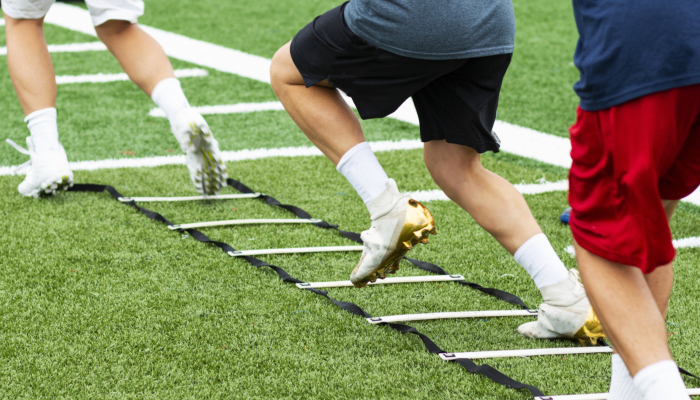By Guest Blogger Laura Buxenbaum, MPH, RD, LDN
It’s that time of year again: time to trade in flip-flops and pool bags for lace-up shoes and backpacks. For many youth, back to school means back to sports. According to The Aspen Institute’s Project Play Report, 69 percent of youth, ages 13-17 were participating in individual and team sports, pre-pandemic. While those numbers declined last year, the hope is that we can get children and adolescents back on the playing field this fall.
Back on the playing field means back to healthy habits. Nutrition plays a key role in athletic performance and recovery, yet many student athletes show up to practice dehydrated and undernourished. Performance suffers and chances for injury increase when young athletes don’t pay attention to fueling their bodies. Here are 4 tips to make sure your student athlete has top notch nutrition.
Hydrate Every Hour
Dehydration can affect athletic performance and put athletes at risk of heat injury. Preventing dehydration starts with drinking consistently throughout the day. Student athletes can see how they’re doing with hydration by checking for light to clear urine. Brightly colored urine means fluid needs are not being met.
Water should be the main go to for hydration. Sports drinks containing energy from carbohydrates and electrolytes, like sodium and potassium, are appropriate when intense physical activity will extend beyond one hour.
Additionally, white and chocolate milk are also smart ways to help young athletes meet their fluid needs. Milk contains 13 essential nutrients the body needs, including protein to build and repair muscle tissue, calcium, and vitamin D to build and maintain strong bones, and potassium to regulate body fluid balance and normal muscle function.
Power Up with Protein
Protein is essential to support growth and build and repair muscle in active bodies. Student athletes should spread protein foods throughout the day, incorporating them into both meals and snacks. Athletes should be aware of lean protein choices and select them over frequently consumed burgers, bacon, sausages, and fried foods.
Examples of lean protein include:
- Grilled chicken or fish
- Low-fat or fat-free milk and yogurt
- Roasted turkey
- Cottage cheese
- Beans, peas, and lentils
Carbohydrates are Crucial
Carbohydrates are the key fuel source needed during intense physical activity. There are two types of carbohydrates – simple and complex. Simple carbohydrates or simple sugars are mainly glucose which is easily digested by the body. When a game or practice is going to extend beyond an hour and it’s less than 2 hours until game time, simple carbohydrates without a lot of fiber are crucial so they can be quickly utilized for energy. Some examples include a small bag of pretzels, a banana, or a 4 oz container of yogurt. At all other times, young athletes will benefit from nourishing sources of complex carbohydrates, such as whole grain breads and pastas, oatmeal, and sweet potatoes.
Recover and Repeat
Recovery nutrition will make a difference for the athlete that needs to head back out on the field and repeat an intense performance the next day. It takes time for the fluids, electrolytes, and energy stores lost during intense physical activity to be replenished, so time is of the essence. The best practice is to have a mini-meal or snack within an hour and a full and balanced meal within 2-3 hours after the intense effort is over. With its affordable combination of lean protein, carbohydrates, electrolytes and fluid, chocolate milk is a great after practice or game beverage. In addition, chocolate milk also provides calcium and vitamin D, bone building nutrients needed for young athletes growing bodies. Check out the recipes below to fuel athletes after practice and games.
If you have a young athlete and are looking for more individualized sport nutrition recommendations, a registered dietitian can help create a game plan to ensure your athlete gets the nutrients they need to excel on and off the field.
 Chocolate Banana Frappe
Chocolate Banana Frappe
Ingredients
1 cup (8-ounces) low-fat chocolate milk
1 cup 2% milk
2 (6-ounce) containers vanilla Greek yogurt
1 large ripe banana, peeled
1 tablespoon unsweetened cocoa powder
1 cup ice cubes
Chocolate sprinkles (optional)
Directions
Slice banana and freeze for 30 minutes. Combine milk, yogurt, banana, cocoa powder and ice cubes in blender. Blend until smooth and frothy. Top with chocolate sprinkles, if desired.
Yield: 4 (8-ounce) servings (32 ounces)
Preparation time: 30 minutes
Source: thedairyalliance.com
Want to see more blogs like this and get notifications on local events and happenings? Subscribe to our free weekly newsletters here.
















